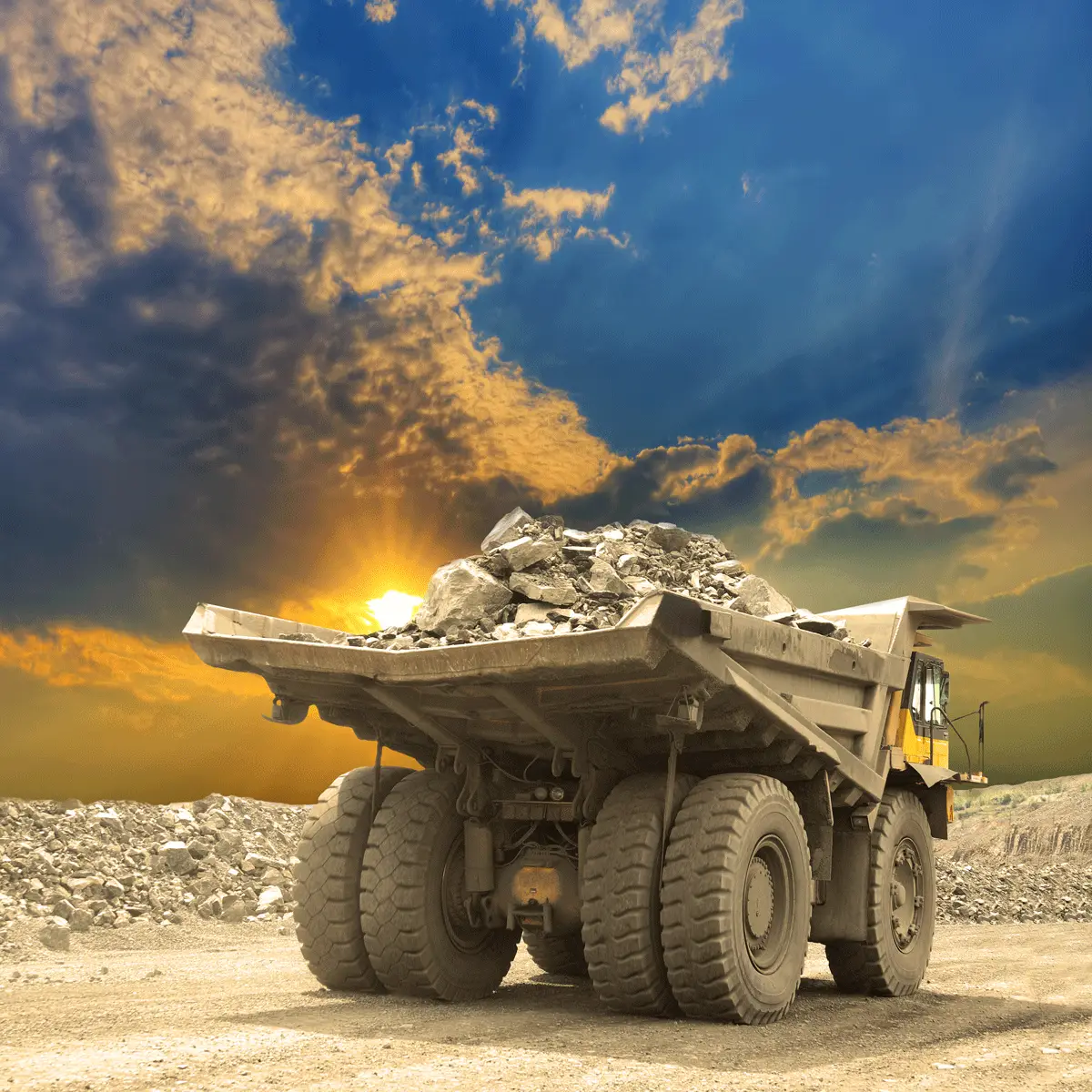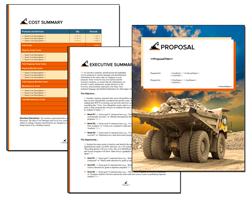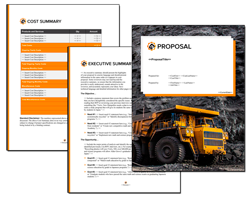
Complete Guide: How to Write a Mining Proposal That Stands Out
Drafting a mining proposal can be the make-or-break factor for your project's future. It's not merely about the technical specifics of your venture-it's your pitch to investors and stakeholders. Looking to master how to write a mining project proposal? This article will provide straightforward guidance to formulate and communicate a convincing case.
Key Takeaways
- A comprehensive mining proposal is essential. It should outline objectives, stakeholder interests, project details, and an environmental impact assessment while adapting to changing market conditions.
- Winning mining proposals requires in-depth research into industry dynamics, market potential, legal and environmental considerations, and the proper allocation of resources and personnel for successful project execution.
- The success of a mining proposal hinges on clear communication, the ability to showcase its unique value to diverse stakeholders, a robust financial plan, sustainable environmental practices, and a persuasive, well-refined presentation.
Understanding the Fundamentals of a Mining Proposal

A mining proposal is a roadmap for a mining project, including details of its objectives, activities, resources, and risks. It provides a comprehensive plan for guiding the project's development and execution. Imagine it as a blueprint detailing everything from equipment needs to safety measures and timelines. Yet, it's not a static document but a living one that evolves in response to the realities of the mining industry and market conditions.
It's an essential tool in the mining industry, and thanks to resources like Proposal Kit, creating a mining proposal is now easier than ever.
Mining project proposal use cases
A mining proposal is not just a document; it's a multi-faceted tool with various applications, each of which will include different topics unique to each project. This means there is no such thing as a one-size-fits-all mining proposal template. These can range from:
- Planning and executing mining projects, from exploration to extraction for gold, copper, diamonds, uranium, coal, iron ore, rare earth elements, lithium, platinum and silver
- Presenting a clear overview of project objectives, scope, expected deliverables, a comprehensive timeline, budget, potential risks, and strategies for mitigation
- Streamlining project planning and increasing the likelihood of obtaining project funding
- Facilitating real-time collaboration with stakeholders while tracking progress
- Identifying potential risks early, allowing for the development of better mitigation strategies
- Enhancing chances of securing funding and support for mining projects
Defining Your Mining Project's Objectives

Every success begins with a destination in mind; the same is true for your mining project. Clearly defining a mining project's primary goals and objectives is crucial to present a clear vision to potential investors and stakeholders. Starting with a plan is vital to your success.
Identifying Key Stakeholders and Their Interests
In the field of mining projects, stakeholders play a crucial role. They are the ones who can make or break your project, and their interests are as varied as they are. This could include:
- Local businesses that may focus on the economic impact of your project
- Investors who are interested in profitability and risk management
- Government bodies who are concerned with compliance with relevant regulations
- Environmental agencies are focused on minimizing the environmental impact of the project
Understanding and engaging with all relevant stakeholders is essential to ensure the success of your mining project and avoid unexpected problems.
Therefore, a mining proposal must demonstrate an understanding of their goals and alignment with the services provided to ensure they are tailored to their needs.
Writing your Mining Project Proposal

Now that we've laid the groundwork let's look into the heart of the matter: writing your mining project proposal. It begins with clearly defining the project scope, including specific objectives, deliverables, and timelines to set realistic goals. Think of it as setting the stage for your mining project, providing the foundation upon which all other elements are built.
Conducting extensive research plays an integral part in this process. You'll want to leave no stone unturned about understanding:
- The mining industry
- Potential project locations
- Environmental considerations
- Legal requirements
The more thorough your research, the more persuasive your proposal will be, enabling you to make well-informed decisions.
Next, your proposal should include a detailed project plan covering:
- Steps
- Activities
- Resources needed
- Extraction methods
- Equipment
- Workforce
- Safety measures

It's like a roadmap, guiding you from start to finish while highlighting potential challenges.
Also, it's crucial to address environmental impacts and sustainability within your proposal, outlining strategies for minimizing environmental damage and adhering to environmental regulations while considering the environmental aspects.
Lastly, your mining proposal needs a solid financial plan detailing anticipated costs, a budget, revenue projections, and potential funding sources. Even the best-laid plans can have errors, so proofreading and refining your proposal must ensure it is error-free, logically structured, and communicates your mining project's ideas and plans.
Creating a Winning Executive Summary
In the field of mining proposals, first impressions are paramount. That's where the executive summary comes in. It's your chance to captivate your readers by providing a brief overview of each critical section and quickly engaging them with information about your mining business and the industry. A high-level executive may only read the Executive Summary, leaving their team to read the details.
Presenting Your Track Record
Your mining experience track record is your passport to credibility. By demonstrating your experience and successes in the mining industry, you build credibility and trust with potential investors.
This could involve showcasing case studies of successful mining investments or detailing how your company has overcome challenges in the past.
Showcasing the Investment Opportunity
Profitable. Potential investors want to see this in your mining project. This is where you highlight its unique aspects and potential profitability. It's like presenting your project as a diamond in the rough, ready to be transformed into a gem of an investment.
Some crucial elements in this process include:
- Showcasing the business's distinctive features
- Leveraging social proof with case studies and testimonials
- Clearly articulating the value proposition and potential returns
Conducting Comprehensive Research

Research is the cornerstone of a mining proposal. It involves thoroughly understanding the project and exploring every corner, including potential project locations, environmental considerations, and legal requirements. It also involves understanding and addressing potential environmental, social, and operational risks.
Additionally, specialized software applications may be used to develop financial models that provide precision and handle the complex financial aspects of mining projects.
Assessing Environmental Impact
Mining projects need to be environmentally responsible. This begins with a thorough assessment of the proposed project's environmental impact. It's about understanding the potential effects on the local environment, proposing mitigation strategies, and ensuring your project adheres to environmental regulations, including worker safety.
It's also about securing the necessary permits for drilling, blasting, land use, and environmental permits for waste and water management before beginning mining operations.
Evaluating Market Potential and Risks
A successful mining project doesn't just dig into the ground; it also understands the market. Evaluating your mining project's market potential and risks is crucial for financial planning. It's about:
- Understanding your competition
- The challenge to overcome misconceptions in the market
- Assessing whether your project can provide a sufficient return on capital and create value for business owners.
It's also about ensuring your project's financial model can handle stressful situations and meet borrowing and investment conditions.
Developing a Detailed Project Plan
A mining project with a detailed project plan is likely to succeed. The project plan details operational aspects, including:
- Types of resources
- Extraction volumes
- Equipment
- Safety
- Regulatory issues
It's about identifying deposits with significant mineral resources and assessing project parameters such as geographical boundaries, reserves, and potential production rates.
It's also about ensuring that the project's scope, including the mine's useful life, target market, and the financial investment required, align with the results of detailed studies such as preliminary economic assessment, pre-feasibility, and feasibility studies.
Describing the Extraction Process
The heart of any mining project is the extraction process. It is crucial to describe how this process will be carried out and how current technologies will be used for efficient mining operations. It provides real-time data to equipment operators to enable monitoring and adjustments during production, leading to enhanced mineral recovery and cost savings.
It also incorporates automatic, non-disruptive, and accurate integration systems for efficient process management. It's about reducing environmental risks by adopting low-impact mining techniques, which minimize surface disturbances and soil erosion.
Allocating Resources and Personnel
In mining, resources and personnel is the fuel that powers your project. Allocating these is crucial for its success. It's about understanding who forms part of your company's leadership and how the team will expand upon securing projects.
It's also about detailing your business plan, which includes various aspects of business plans, such as operating hours, critical assets, a list of suppliers, and expenditure on staffing, equipment, and real estate to support business operations while protecting proprietary information.
Financial Planning and Projections
Money makes the mining world go round. Creating a robust financial plan and projections is critical to attracting potential investments and securing long-term loans for mining projects. It's about creating precise cash flow projections and considering substantial upfront funds required for:
- Equipment
- Labor
- Land acquisition
- Legal expenses
It's also about developing financial models to weather stressful situations and meet borrowing and investment conditions.
Drafting a Budget Overview
A budget is more than just a number; it's a roadmap to financial success. Creating a comprehensive budget overview, including costs for equipment, labor, permits, and other expenses, is crucial. It's about accounting for infrastructure construction, equipment purchase, initial sales and marketing expenditures, and potential revenue increases from enhancing mineral recovery.
It's also about creating a comprehensive financial model that includes five-year forecasts of income statements, balance sheets, and cash flow statements.
Outlining Funding Requirements
A mining project requires a vision and the financial means to bring that vision to life. Outlining the funding requirements, including:
- Capital expenses
- Operating expenses
- Product prices
- Lifespan of the mining project
It is an important step to address potential risks. It's about ensuring your financial model can handle stressful situations and meet borrowing and investment conditions.
It's also about understanding lenders' scrutiny criteria, such as financial management style, borrowing capacity, ability to repay loans, and potential return on investment.
Here are some related samples included in every downloadable Proposal Pack
Here are some related downloadable templates
Addressing Environmental and Social Concerns
Mining isn't just about extracting resources from the earth; it's also about caring for the environment and fostering social development. Addressing environmental and social concerns in your mining proposal and detailing potential impacts and mitigation strategies are crucial. It's about understanding the possible effects on the local environment and communities and proposing mitigation strategies.
It's also about presenting a comprehensive plan for the mine's closure, detailing the site reclamation, and reaffirming the commitment to environmental restoration post-extraction.
Implementing Sustainable Practices
Sustainability is not just a buzzword; it's a necessity these days. Implementing sustainable practices in your mining operations is essential to minimize the environmental footprint and adhere to regulations. It's about understanding and adhering to federal laws that address a spectrum of environmental concerns.
It also explores sustainable mining practices, such as reclamation efforts, soil treatment, water treatment strategies, and site rehabilitation.
Engaging with Local Communities
Mining projects don't operate in isolation; they are part of a broader social fabric. Engaging with local communities to build trust, create job opportunities, and foster economic development is crucial. It's about initiating public participation processes during the planning phase and creating open communication channels with local communities.
It also creates shared value and contributes to a positive long-term reputation.
 Proposal Kit Professional provides the most content, including legal contracts and a free design theme pack. Plus, advanced software features include custom branding and customizable quoting databases.
Proposal Kit Professional provides the most content, including legal contracts and a free design theme pack. Plus, advanced software features include custom branding and customizable quoting databases. Proposal Pack for Any Business covers this type of proposal and includes samples. There are also some commonly used specialty design themes available:
Proposal Pack for Any Business covers this type of proposal and includes samples. There are also some commonly used specialty design themes available:Photo Design Proposal Packs
The Art of Persuasion: Tailoring Your Proposal

A mining proposal is not just a document; it's a persuasive tool. The key is to tailor your proposal to different stakeholders and use persuasive writing techniques to showcase the project's benefits and value.
It's about demonstrating an understanding of the reader's needs and ensuring that the project's benefits align with their interests.
Highlighting Benefits to Different Stakeholders
Every stakeholder has different needs and interests. Highlighting the benefits and opportunities relevant to each stakeholder group in your mining proposal is crucial. It's about creating sections that address the distinct goals, needs, and opportunities relevant to each stakeholder group.
It's also about ensuring that each section of your proposal provides targeted and relevant potential benefits for each group.
Using Persuasive Writing Techniques
Writing a mining proposal isn't just about stating facts; it's about persuading your audience. Persuasive writing techniques, such as the 'Problem, Agitate, Solution' approach, can make your proposal more compelling. It's also about maintaining a consistent tone of voice that is relatable and custom-fit to the client, enhancing the persuasive element in the proposal.
It's also about incorporating a direct call to action as the culmination of the proposal, encouraging the reader to take a desired step.
Finalizing and Presenting Your Proposal
A well-written mining proposal is only as good as its presentation. Finalizing and presenting your mining proposal to stakeholders and potential investors is crucial to securing support for the project. It's about ensuring every detail is polished and well-presented, whether shared with relevant parties via email or hand-delivered by the sales manager during a detailed technical presentation.
Proofreading and Refinement
Proofreading and refinement are the final touches that can transform a good mining proposal into a great one. It's crucial to ensure that complex data is presented clearly and effectively in the mining proposal.
Effective Presentation Strategies
An effective presentation can make all the difference in securing funding and stakeholder approval for your mining project. Using high-quality visuals and interactive elements can engage the audience and enhance the impact of your proposal. Design elements like sufficient whitespace, harmonious color schemes, and readable typography can strengthen the overall impact and credibility of your proposal.
It's also about integrating interactive elements, such as virtual reality tours or interactive data visualizations, to make the proposal presentation more compelling.
Wrapping up the Proposal
Wrap up the proposal, summarizing the key points and providing recommendations and calls to action.
Summary
Creating a standout mining proposal is a comprehensive process that requires attention to detail, extensive research, and a clear understanding of stakeholder interests. It's about presenting a well-structured document that communicates the project's objectives, scope, and the value it brings to different stakeholders. Remember to include a compelling executive summary, a detailed project plan, and a robust financial strategy. Most importantly, it addresses environmental and social concerns with sustainable practices and community engagement. As you finalize your proposal, ensure it is meticulously proofread and presented with practical strategies to captivate your audience. Now, apply these insights to create a mining proposal that stands out and paves the way for a successful venture.
Frequently Asked Questions
What should be included in a mining industry proposal?
A comprehensive mining industry proposal should include an executive summary, project description, feasibility study, environmental impact assessment, financial projections, and risk analysis. It's also important to detail the technology and methods you plan to use, provide information on the team's expertise, and explain your compliance with local and international mining regulations.
How do I conduct a feasibility study for a mining project proposal?
Conducting a feasibility study involves evaluating the mining project's technical aspects, economic viability, and legal requirements. This includes assessing mineral reserves, examining the proposed extraction methods, performing market analysis, estimating costs and revenues, and analyzing environmental impacts. Engaging geology, mining engineering, and finance experts is crucial for an accurate study.
What are the key environmental considerations to address in a mining proposal?
Key environmental considerations include the impact on local wildlife and habitats, water and air quality, and land degradation. Proposals should outline measures for mitigating adverse effects, such as pollution control technologies, land reclamation plans, and monitoring systems. Additionally, it's essential to comply with environmental laws and regulations and include any necessary permits or approvals in your proposal.
How can I demonstrate financial viability in my mining proposal?
Demonstrating financial viability involves providing detailed cost analyses, including capital expenditures, operational costs, and projected revenues. Break-even analyses, net present value (NPV), internal rate of return (IRR), and sensitivity analyses can show the project's profitability under various scenarios. Clear, realistic financial models and backing from credible financial institutions or investors can strengthen the proposal's credibility.



 Cart
Cart
 Are you just looking for a template, sample, or software for your mining proposals? Click these links to skip down the page and get right to it.
Are you just looking for a template, sample, or software for your mining proposals? Click these links to skip down the page and get right to it.

















 Facebook
Facebook YouTube
YouTube X
X Search Site
Search Site